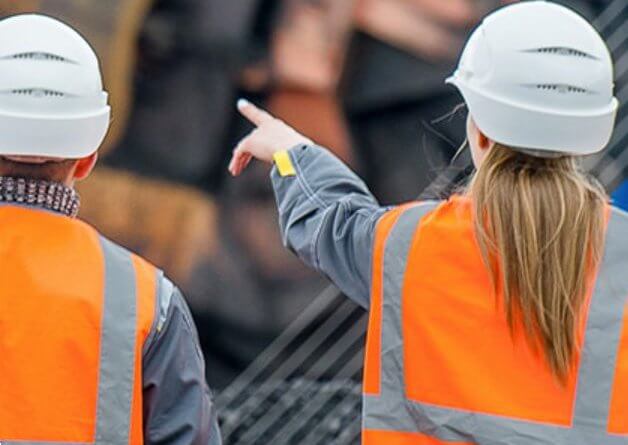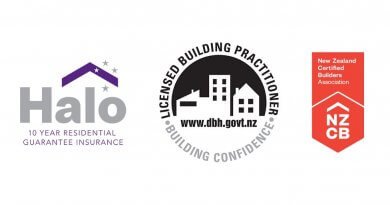3 Essential Steps to Build a Culture of Transparency in Construction
Raise your hand if you remember Veruca Salt from Charlie and the Chocolate Factory, singing her outrageous song that boiled down to wanting more, more, more.
Does it ever feel like this attitude is prevalent in the construction industry as well? Like everywhere you look someone is stating that we need “more collaboration,” “more communication” and “more data?” In the other direction, teams are also being pressured to work with “less budget”, “less time” and “fewer resources.”
Nonetheless, it often seems like there is little proposed in when it comes to solutions how to create a more collaborative culture with less. But much like Veruca and her golden goose, however, we won’t get far if we don’t actually step up and propose real action. To truly boost collaboration, improve communications and gather more data more efficiently, it’s necessary for setting up a framework for these values to flourish at the very core of the business. And it all starts with building a culture of transparency in construction.
Below, we’ll discuss why a culture of transparency is the key to unlocking more information and sharing on your projects–and how to accomplish it.
Why Do We Need More Transparency in Construction?
Many times, project stakeholders are quick to ask for more communication and collaboration. But these values will only be successfully fostered in a project when they are built in from the very first step.
Nonetheless, when the topic of project-wide visibility comes up, many are unwilling to share their scope of work and project data because it’s too time-consuming. Additionally, many current building processes, contracts and delivery methods promote exclusivity, centralized, paper-based information and barriers to communication and visibility. Nevertheless, we can’t hope to improve collaboration and gather more data when too few people are empowered to access the plans, stakeholders and systems that govern construction.
Today, 45% of construction companies report that a lack of visibility across projects is a top challenge. In order to bring more visibility to projects and gather more collaboration, communication and data, it starts with building transparency into the very core of projects and companies.
What Does Transparency in Construction Really Mean?
So, first, just what does it mean to promote transparency in construction?
Going back to the basics, according to Merriam-Webster, the definition of transparent is, “characterized by visibility or accessibility of information especially concerning business practices.” That’s not all, though. The definition also carries meanings such as “readily understood,” “easily detected or seen through” and “free from pretense or deceit.”
More likely than not, project stakeholders are not intentionally hiding or creating barriers to obtaining information. Nonetheless, many do make it difficult to understand the next steps and find and access information and data. A large part of this is because there are little tools and refined practices leveraged across a project to help the entire team see the big picture.
Transparency in construction requires that everyone can see what has happened–all actions performed and when they were performed; and what still needs to happen–how and when those actions should take place.
The Benefits of Transparency in Construction
The truth is, businesses aren’t going to take steps that don’t result in greater profit returns and a better workflow. Happily, promoting transparency in construction has many positive effects and benefits. Among them are:
- Improved trust between teams and stakeholders from more communication
- Increased efficiency, because everyone has access to the information needed to move forward
- Better decisions are driven by more information and data across the board so teams and trades can contribute their specialized advice and knowledge
- Greater accountability and higher quality of work due to more external pressure to match performance by other teams
- Enhanced safety on jobsites, because all team members are informed of all that’s occurring on the jobsite
- Decreased risk on a project on a whole
Creating transparency in construction also reduces rework, which is a huge benefit. Rework is one of the biggest threats to profitability, not to mention your good name. It puts projects behind schedule, requires the manufacture of new parts, drains budgets and makes companies look bad in front of owners.
The good news is that, by valuing transparency, prioritizing communication and making all critical information readily available, you can help mitigate or eliminate faulty design or construction processes that lead to rework.
3 Strategies to Build a Culture of Transparency in Construction
Building a culture of transparency will naturally take some effort, but by starting with the following three steps, any company can steadily improve project-wide visibility over time.
1. Utilize Effective Project Delivery Models
Unfortunately, current project delivery models aren’t cutting the mustard. Why? Because risk aversion in construction has created a culture where transparency is not prioritized. Relying on design-bid-build models means stakeholders are quick to parcel out blame to particular contractors if something goes wrong. Additionally, it also creates inherent siloing of the project, which by definition cuts workers off from one another and kills transparency in construction.
It doesn’t make sense to prioritize risk adversity at the expense of productivity, however. As an article in Procedia Engineering points out, what is potentially profitable carries a considerable degree of risk, whereas risk-free propositions typically don’t pay off in the same way, if at all.
Instead, construction companies need to choose a project delivery method where transparency is incentivized–for instance, integrated project delivery (IPD) or another collaborative approach. The increasingly popular design-build model also improves coordination compared to traditional delivery models. Embracing a more collaborative delivery model will ensure the project begins in a state of transparency and continues throughout the design and build phase.
2. Get the Right Tools
In construction, two fundamental drivers of transparency include:
- An ability to track everything that happens throughout the construction process
- The ease-of-use when it comes to tracking
To achieve these, it requires the right digital tools.
Construction projects require many changes and adjustments along the way. If you don’t track those changes, other trades or team members can likely make mistakes because they don’t have real visibility into the full situation. Tracking all changes as you go is an excellent way to prevent that trouble. But that’s easier said than done. A few tools that can help include using building information modeling (BIM) during design and construction and implementing mobile collaboration software to track and communicate project changes in real time.
But as mentioned above, these tracking tools need to virtually be second nature to field staff if they are going to make any impact on transparency at all. You can tell workers to “track this” and “improve collaboration,” but they won’t do it until it’s not incredibly easy. That means utilizing mobile tools that allow workers to track, edit and share feedback effortlessly on the go from both the field and the office.
3. Create One Source of Truth
To learn about the current status of a project, where do you currently go to find information? If you need to find several separate documents or open up multiple programs to piece information together, you lack one consistent source of truth. To maintain transparency throughout a project, you need to create a centralized platform for documentation where all project changes can be recorded in real-time. With plans and information always up to date and available to access via a cloud-based document management system, all workers can view the current state of the project–both online and offline access.
Moreover, a single overview for project administrators of project momentum is incredibly useful to the overall transparency of the project and moving work forward.
Prioritize Building Transparency into the Core of Your Projects
At its root, transparency is beneficial not because it’s the right thing to do or because it leads to happier working environments–though both are true–but because businesses that choose to prioritize it will quickly rise above the competition and increase their profits.
Again, there’s a simple reason for this: companies that leave obstructions in place will experience faultier communication, more contentious collaboration and less access to data–plus a reduced ability to make use of the data you do have. Today, projects cannot meet the increasing pressures of construction in environments that don’t foster transparency from the start.
So it’s okay to want more with less. Before you can get it, though, you have to make transparency your highest priority. Why not start today?
Source: PlanGrid




